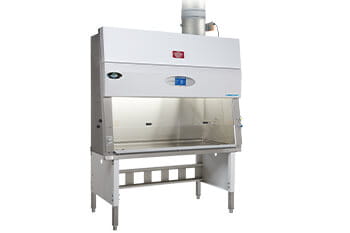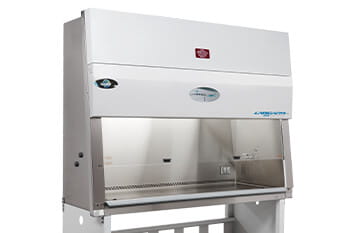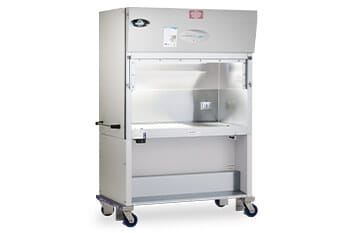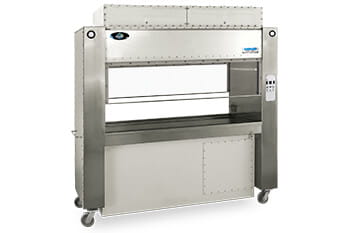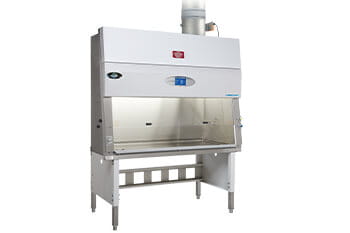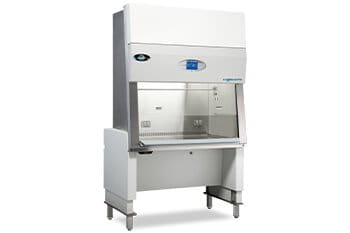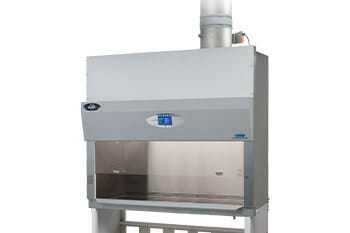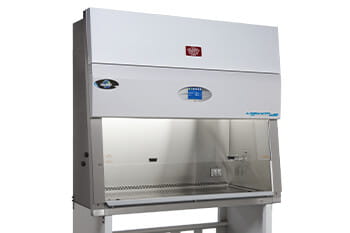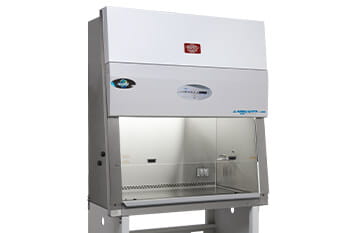Article
Optimal Biosafety Cabinet Access Opening Heights
6/19/2023 John PetersClass II biosafety cabinets are crucial for maintaining a safe environment in laboratories and pharmacies dealing with biological samples or compounding hazardous drugs. One key feature that ensures their effectiveness is the access opening, a specific height at which a biosafety cabinet is certified to operate. The access opening is an integral part of a Biosafety Cabinet's (BSC) design as it balances the airflow, allowing the cabinet to maintain an average inflow velocity of 100 ft/min (0.51 m/s) through the front intake grill. This inflow velocity or volume of air flowing from the room into the front access opening forms an air barrier, effectively preventing the escape of aerosols generated within the cabinet's work zone.
One of the commonly used access opening heights is the 8-inch (203 mm) opening. This offers maximum protection by limiting vertical arm movements, thus minimizing disruptions to the air barrier. A smaller work access opening also reduces the demand on the cabinet's motor blower by requiring it to pull a smaller volume of air through the front of the cabinet. This has the potential to reduce the cabinet noise level and its overall electrical consumption. The obvious tradeoff is that smaller work access opening sacrifices the extra room to maneuver that could be ideal for applications such as drug compounding or small animal procedures.
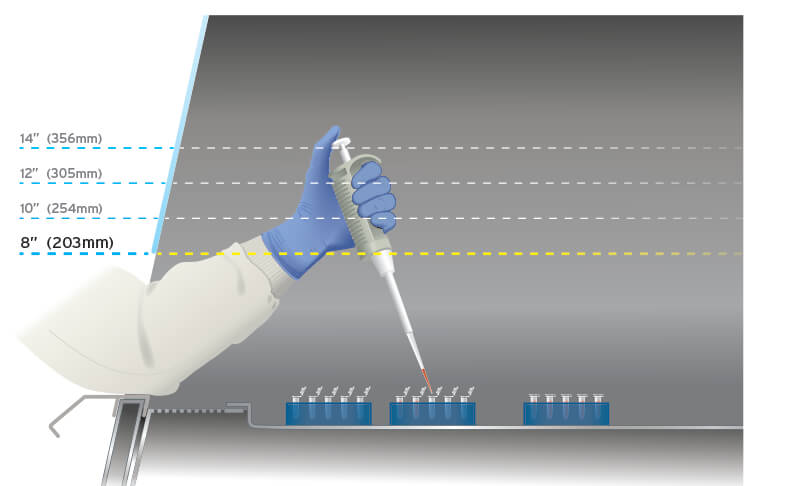
Alternatively, a 12-inch (305 mm) access opening enhances ergonomics, permitting more vertical arm movements within the work zone. This added convenience facilitates more accessible access to items higher in the work zone, such as IV bags for sterile drug preparation, and allows long-neck pipettes. The taller access is also key for performing tasks in the vivarium, such as changing mouse cages or other procedures. As you might expect, the trade-off is that a larger access opening means the motor must move a larger volume of air through the cabinet, potentially requiring more power or leading to a slightly higher noise level.
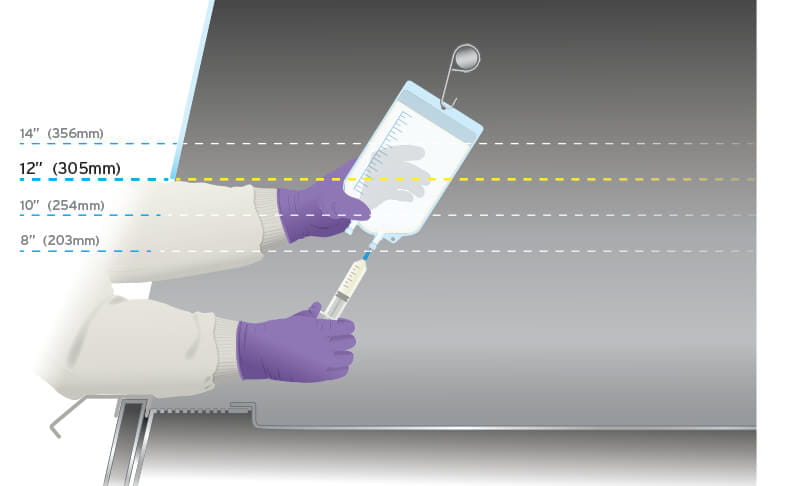
The 10-inch (254 mm) access opening is the standard height for NuAire Class II Type A2 biosafety cabinets. This size offers a balanced approach, enabling more arm mobility while prolonging filter life. Regardless of whether the opening is 8, 10, or 12 inches (203, 254, 305 mm), all access openings maintain the same inflow velocity of 105 feet per minute, ensuring a consistent air barrier that protects the user.
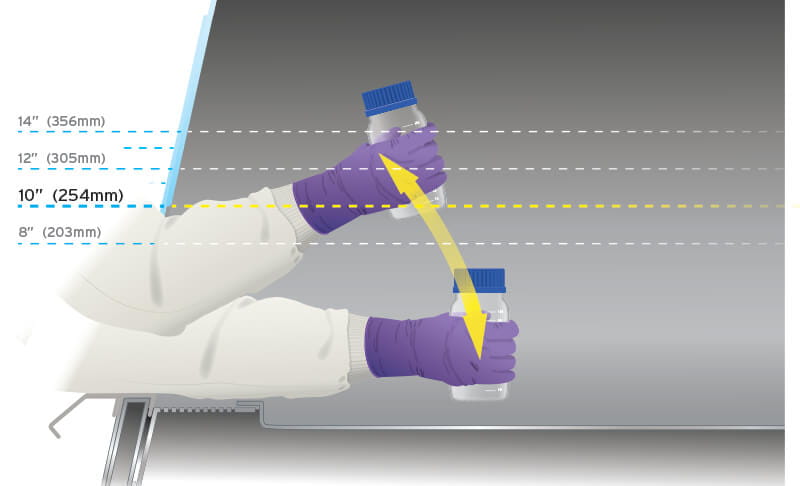
For applications requiring more extensive access, such as small animal handling, larger access openings like the 14-inch (356 mm) option on model NU-640 are available. This larger opening allows technicians in a vivarium to move large rat cages in and out of the work zone without needing to adjust the window sash. The higher opening facilitates comfortable arm movements above rat cages without hindrance from the window sash. Finally, the hinged design can make some maintenance tasks a bit easier.
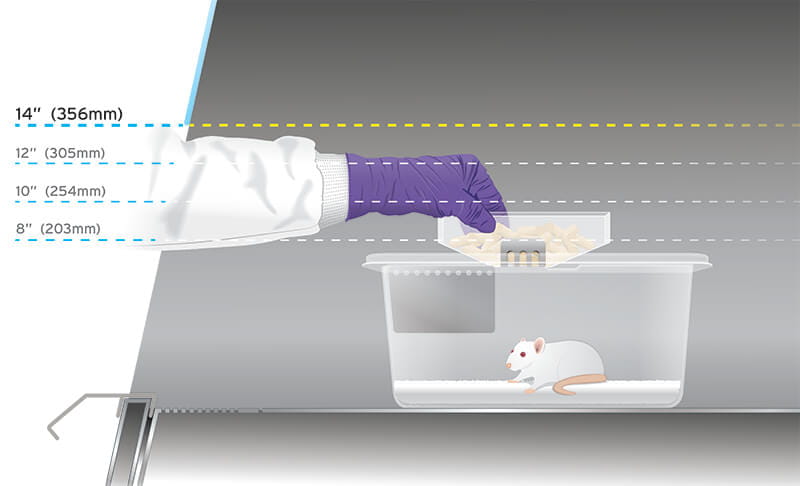
In conclusion, selecting an access opening is not a one-size-fits-all decision. The choice of opening is made at the time of order and should be based on your laboratory's specific needs and risk assessments. There is no universally ideal working height; instead, the optimal work height for your facility or application should be determined by identifying your criteria during a risk assessment so you may search for a cabinet designed to work safely at the height you need. This ensures the biosafety cabinet is tailored to provide maximum protection and efficiency for your unique requirements.

